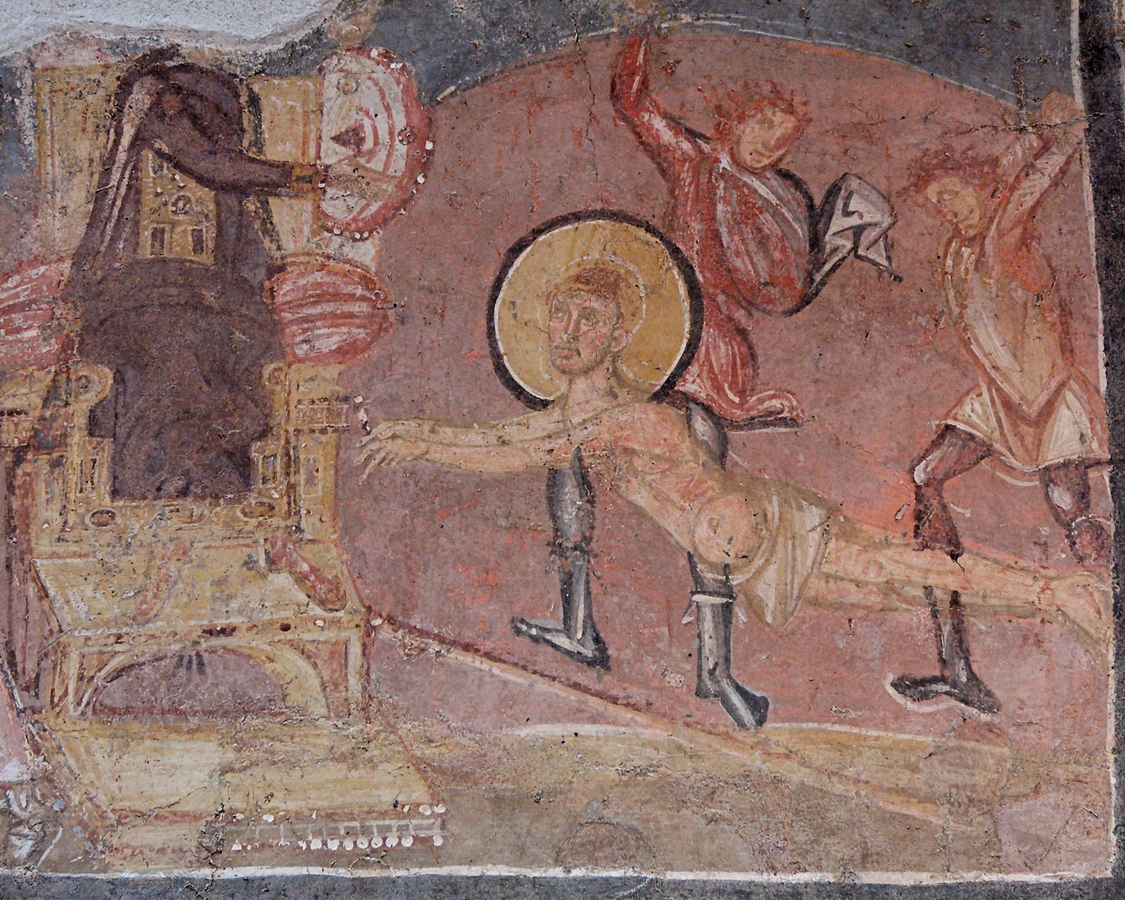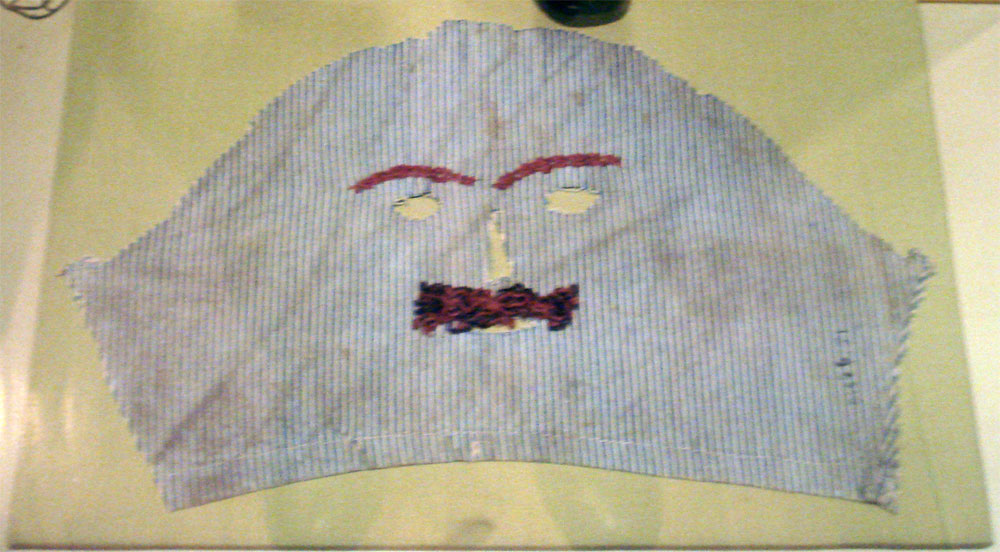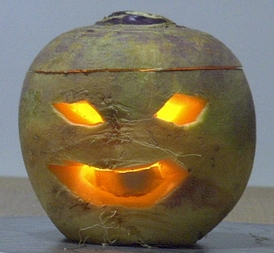
Erasmus. (All photos featured: Wikimedia Commons)
DUNWOODIE — The National Retail Federation estimates Halloween spending on costumes, candy, and decorations could reach $12 billion this year, a stark contrast to the holiday’s true origins in early Christianity when life was cheap.
This holiday’s roots stretch back to the 4th century when Christians sought to solemnly venerate Roman martyrs some 300 years after the resurrection of Christ. In that period, persecution against Christians came in “waves,” said Father Michael Bruno, dean of seminarians and professor of church history at St. Joseph Seminary and College at Dunwoodie, Yonkers.
Some emperors tolerated Christianity, but others saw it as a threat to Rome’s political power and strict adherence to pagan worship. Slaughters ensued, with Christians crucified, burnt at the stake, beheaded, or fed to wild animals in arenas.
Church historians subsequently recorded the names of 1,500 to 1,750 people in the “Roman Martyrology.” However, that list swelled dramatically under Emperor Diocletian, who ruled Rome from A.D. 284 to 305.
Father Bruno said he inflicted one of the empire’s “bloodiest” persecutions.
“Diocletian,” he added, “roughly doubled that number of martyrs.” The slaughter stopped after Diocletian
left office and retired. One of his successors, Emperor Constantine, converted to the faith and legalized Christianity with the Edict of Milan in 313.
Nearly 300 years later, Christians took stock of the total carnage inflicted by the empire, Father Bruno said, and wanted to commemorate the victims — who included martyrs and “confessors of the faith” who were tortured, imprisoned, or both, but died of causes unrelated to the persecution.
Church leaders wanted to venerate the people of both groups, which grew to include numerous saints.
However, because of Diocletian’s persecution that doubled the number of martyrs, liturgical calendars didn’t have enough days to recognize everyone persecuted for the faith.
“This required a solution of creating a collective memorial,” Father Bruno said. On May 13, 609, the Pantheon — once a Roman temple — was converted and consecrated to become the Basilica of St. Mary, Queen of Martyrs. He explained that the anniversary of that consecration commemorated all the martyrs.
Then, in the early 8th century, Father Bruno said Pope Gregory III consecrated a chapel to all saints in the
old St. Peter’s Basilica. Pope Gregory then fixed Nov. 1 as the date for the feast of saints — “All Saints Day.”

As a result, Oct. 31 became the date for “All Hallows Eve” — the vigil on the night before. That name changed as Christianity grew throughout the world. Hallow is an Old English word for holy, which refers to all holy saints. The word “een” is Scottish for evening or “eve.” Put them together, and you get Halloween.
After All Saints Day is celebrated on Nov. 1, All Souls Day is celebrated on Nov. 2 as a day of prayer and remembrance for all the dead, especially those in Purgatory. This day was established by Father Odilo of Cluny (962- 1049). Father Odilo was a 5th century Benedictine abbot in Cluny, France. Around 1030, he called for his community to help “all the faithful departed” with alms, prayers, and sacrifices to relieve the suffering souls in purgatory.
Soon, the annual observance on Nov. 2 was adopted throughout the Roman Catholic Church, which teaches that the living faithful are people who can help speed the purification of the souls in Purgatory.
This teaching is also based on the prayer of the dead described in 2 Maccabees 12:42–46, according to Father Bruno.
Together, All Hallows Eve, All Saints Day, and All Souls Day form the brief season of Allhallowtide. Cultural practices associated with the season emerged in Europe. For example, “trick or treating” came
from the Medieval English practice of “souling,” in which poor children went door-to-door singing and reciting prayers for the departed relatives of the families they visited.

Their reward was something known as “soul cake” — a round baked treat, topped with a cross, resembling a large cookie. Souling is also present in Portugal and the Philippines, Father Bruno said. He added that costumes became part of the fun, not to portray outlandish characters but to honor the dead. For example, if the departed person was a farmer, the children dressed as such. “They weren’t dressed like superheroes,” Father Bruno noted.
Other traditions evolved, such as the Irish custom of carving jack-o-lanterns from turnips — and later pumpkins — with candles placed inside them to light the way as the “soulers” went door-to-door at night.
Halloween became big business after Western Civilization spread onto the North American continent.
Still, Father Bruno noted that the holiness of Allhallowtide is still relevant. The season, he said, serves as a reminder of personal mortality and the importance of spiritual vigilance and as a reminder to Christians that they have a duty to pray for the deceased, showing affection and charity in life.
There’s also a third reminder, Father Bruno said. “In our very material world, it’s very easy to forget that, as Christians, we’re not alone in this journey,” he explained. “In fact, it’s quite the opposite.”

from turnips.
Hebrews 12:1, he added, describes a “cloud of witnesses” — the saints and the faithful departed — who are “cheering us on in our spiritual journey, providing inspiration and guidance.”
“And so, remembering the saints is important also for our own spiritual life,” Father Bruno said. “We’re not doing this alone, but ultimately, we’re accompanied by the Church, both here on Earth and in heaven.”
